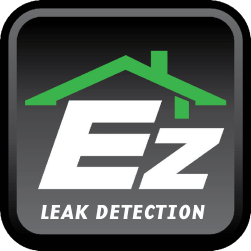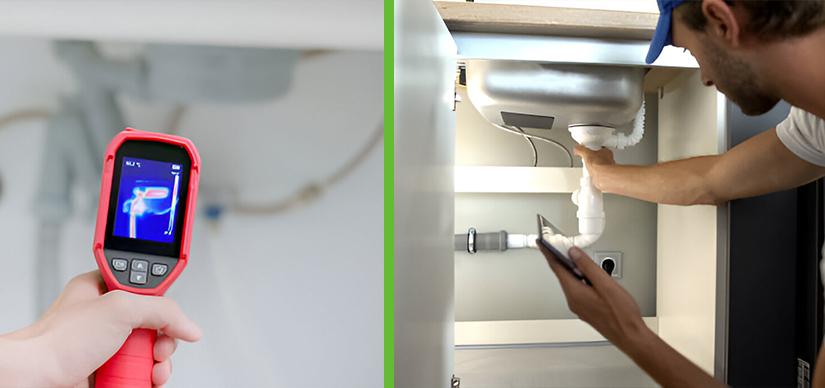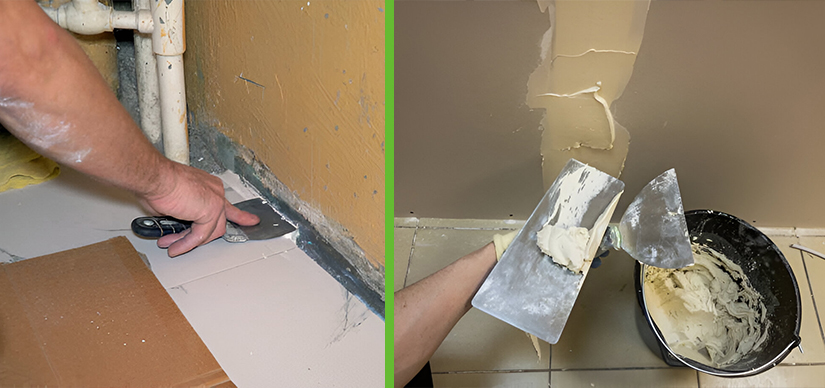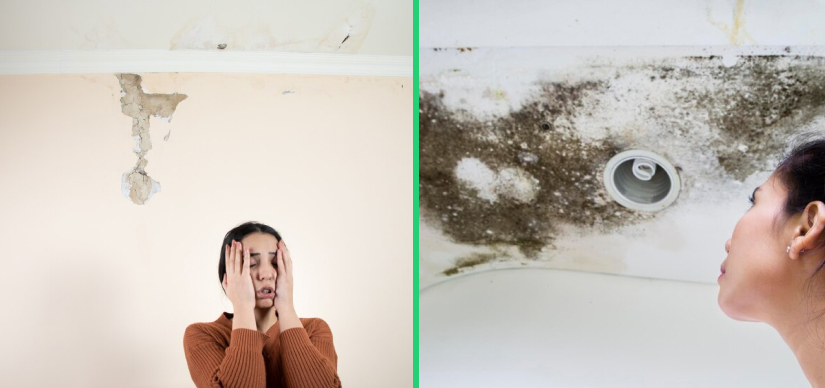Before discussing the different solutions to slab leak repair, let me first and briefly define what a slab leak is. A slab leak is a plumbing leak that occurs in a pipe that is situated below the concrete foundation of the building. Such conditions arise due to factors exacerbated by poor workmanship, rusting pipes, unstable grounds, or high water pressure. For any reason, slab leaks are easily neglected for a long time which causes severe water impairment, foundation complications and expensive resurfacing costs.
Elevated water bills: An overall increase on a specific period with no reasonable explanation points to a possible hidden leak.
Wet or heated areas on the floors:Certain regions of the floor may feel a little wet or warmer compared to the rest.
Listening to running water:If you can hear running water when no one is using the taps, there is a probable slab leak somewhere.
Discoloration on floors or walls:Water being the main factor for causing damage to the building may lead to alteration of the walls or floors of the building.
In the event you observe any of these signs, it would be wise to waste no time in organising a leak detection service. Tackling the issue will be simplified and the cost will be reduced the earlier it is resolved.
Now that you have established that there are signs of a slab leak in the house, it is high time to settle for the right remediation option. Each approach is dependent on the extent of the leak and its location in the repair of a specific slab, as well as the plumbing network of the house in general. Here are the most efficient four approaches that help solve the problem of a slab leak.
These Trenchless pipe repairs confirm the current technology in addressing the slab leaks. Rather than replacing the entire piping system and digging deep and wide trenches along the foundations, the plumber uses special equipment to either replace the old pipe with a newer one or insert a new pipe into the old one.
Perforator:the new pipe is fitted into place by breaking apart the old one. In this case, the old pipe is in fact used as a duct for a rod with a new pipe attached to it.
Both systems are less intrusive into your home, and as a result, the repair work takes less time than that of the conventional methods.
Pros: No need to dig the foundation up, less downtime.
Cons: Repairs may not always be performed on pipes with excessive destruction or corrosion.
In some situations, the best way to fix a slab leak would be considered direct slab penetration. Such a method consists of pouring, or cutting concrete, in order to replace the affected pipe directly. When the water leak is situated in the slab and is revealed, the plumber is able to mend or replace any damaged portions of the encased piping.
Usually this technique is employed in cases of substantial leakage which cannot be repaired using more conservative methods. The process is more complex; however, the success of leak completion works guarantees that the leak will not be in service again.
Pros:As a result of the damages to the pipe being accessed directly, repairs are thorough.
Epoxy pipe coating is another trenchless repair method where a pipe which is damaged is coated using epoxy resin on the inside surface of the pipe. This repair is specifically designed for repair of smaller holes or corroded pipes because it can be prevented from further leaking by isolating epoxy.
The steps consist in cleaning the interior of the pipeline. Then the epoxy coating is applied in order to eliminate any cracks or holes. After the coating is cured, the pipe is put back to its normal operability.
Benefits: Non-destructive, robust and avoids any future plumbing issues.
Drawbacks:Not recommended for large leaks or extensively damaged pipework.
In the top 5 slab leak solutions that every plumber should have, it is important to include a measurement for monitoring and controlling leak detection. One can avoid such excessive damage to the interior and plumbing system by detecting leakage while it is still a small problem. When leaks are detected, specialist companies use advanced technology in order to detect the leak without surface disruption. Electronic listening devices, infrared cameras, and pressure sensors are among tools that can locate the precise area of the leakage, and as a result, make it easy to repair.
In San Diego or your region, you can trust a local plumber who has experience in finding slab leaks. They will not just find the plumbing leak but also advise on the best repair method possible for you.


















